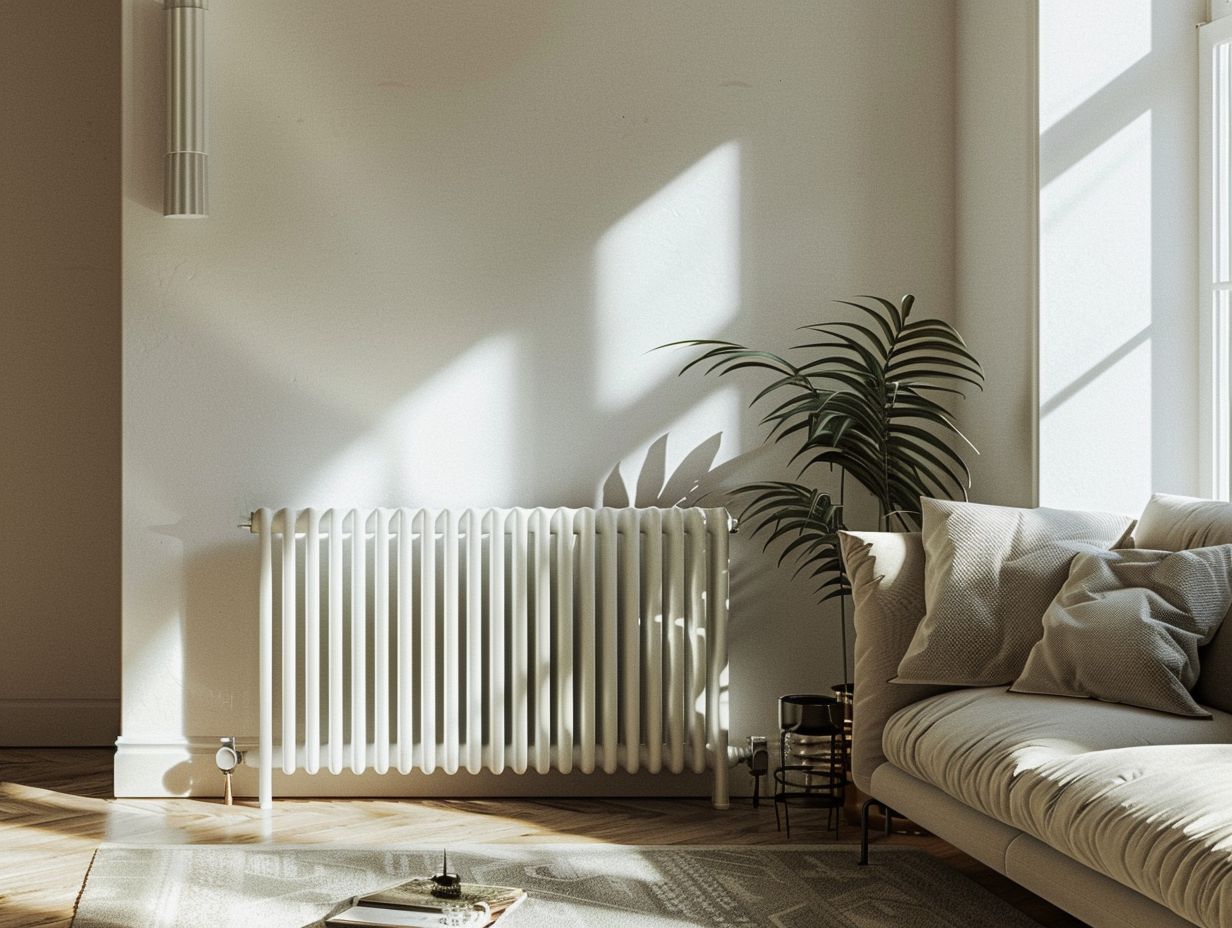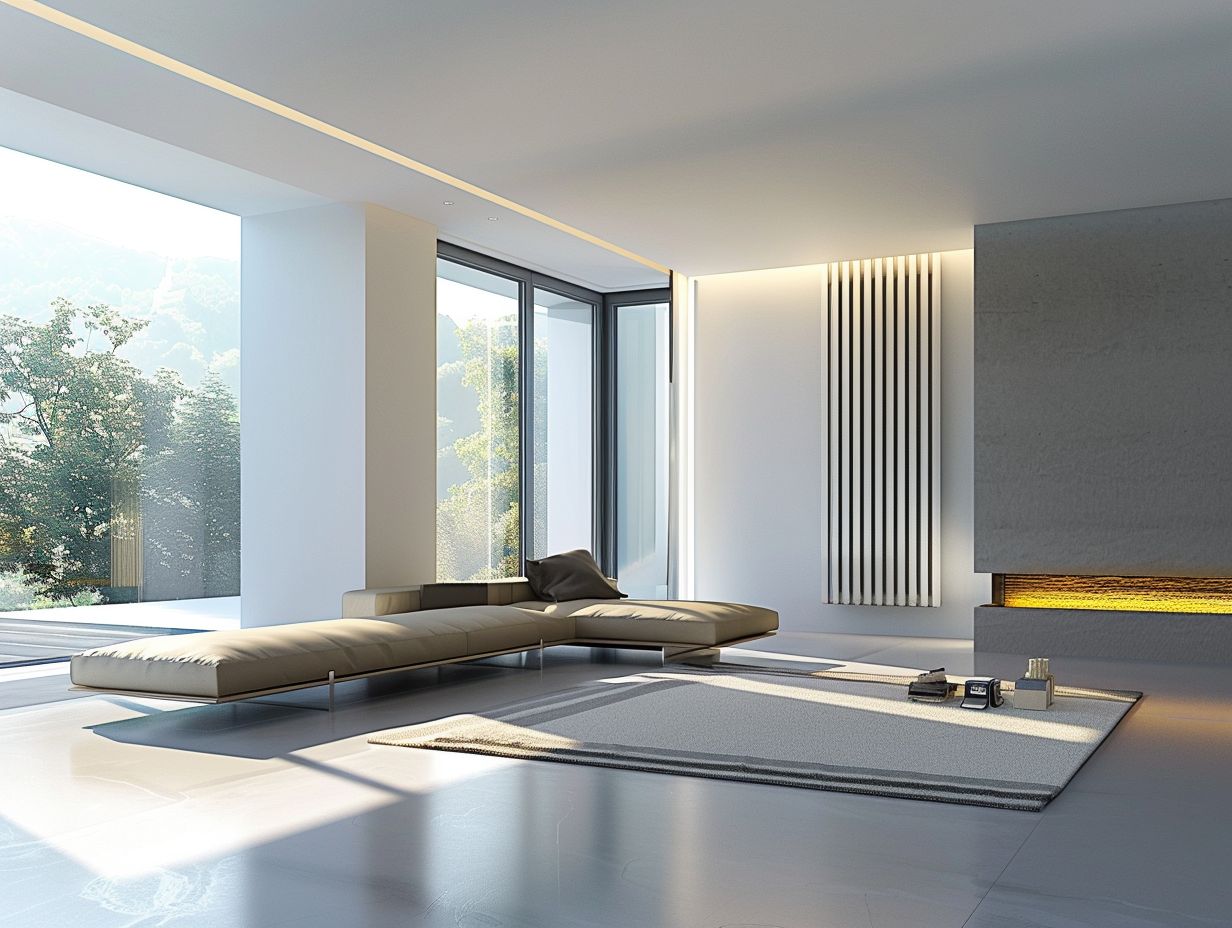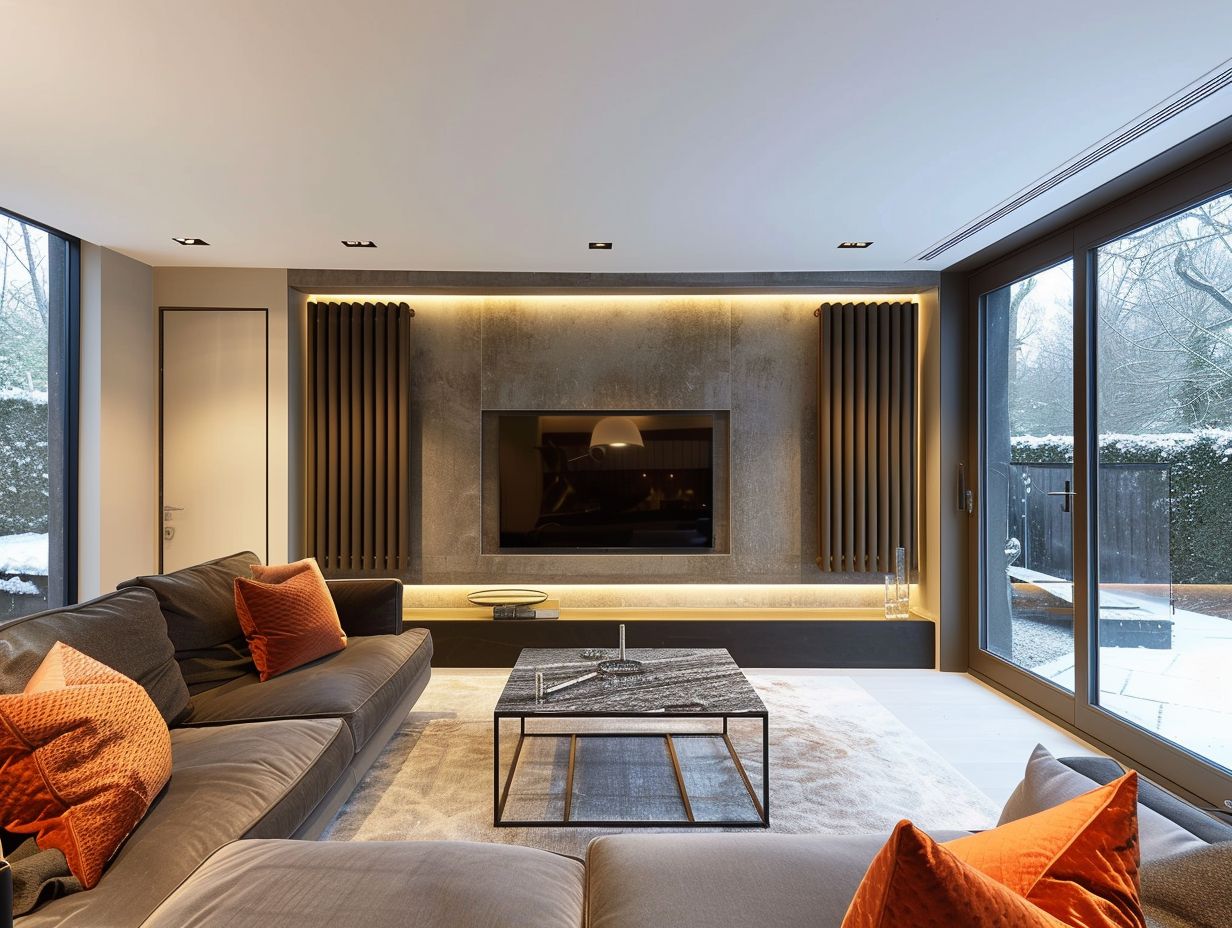Are you considering whether Type 11 radiators are suitable for your heating requirements? The following discussion delves into the characteristics of Type 11 radiators, their energy efficiency levels, and a comparative analysis with other radiator types.
Uncover the advantages of utilising Type 11 radiators, which encompass cost-effective solutions and enhanced comfort levels, in addition to strategies for optimising their energy efficiency. Keep an eye out for insightful insights and recommendations coming your way!
Key Takeaways:

- Type 11 radiators are a type of central heating system that consist of one panel and one convector.
- Factors such as size, placement, and maintenance can greatly affect the energy efficiency of Type 11 radiators.
- Type 11 radiators offer cost savings and improved comfort, making them a popular choice among homeowners.
Understanding Type 11 radiators involves grasping the unique features of these single-panel radiators with convector fins that play a crucial role in efficient heat distribution within a room. You’ll find that Type 11 radiators are recognised for their impressive heat output capabilities and their space-efficient design that makes them a practical choice for various room layouts.
Constructed using materials like steel, aluminium, or a combination of both, Type 11 radiators prioritise durability and efficient heat transfer. The range of modern design options available caters to different aesthetics and room sizes, ensuring they are a versatile choice for both contemporary and traditional interiors.
Manufacturers typically offer guarantees on Type 11 radiators, providing customers with an assurance of the product’s quality and longevity. Whether you’re heating a cosy bedroom or a spacious living room, Type 11 radiators deliver consistent warmth while seamlessly blending into your decor.
What are Type 11 Radiators?
Type 11 radiators are a specific type of heating panel that consists of a single panel and convection fins, designed to efficiently distribute heat within a room. These radiators come in various sizes and are commonly used in central heating systems to provide effective warmth.
The heat output of Type 11 radiators is typically measured in British Thermal Units (BTUs), indicating their heating capacity. In comparison to Type 22 radiators, which feature double panels and convection fins, Type 11 radiators are slimmer and more space-efficient. This makes them suitable options for smaller rooms or spaces with limited wall space. Additionally, they are a cost-effective choice when compared to designer radiators, offering efficient heating solutions without sacrificing style. Type 11 radiators are versatile and can be installed in a range of room types, from bedrooms and living rooms to kitchens and bathrooms.
Energy Efficiency of Type 11 Radiators
The energy efficiency of Type 11 radiators depends on several factors, including their design, heat distribution capabilities, and the BTU output they provide. To optimise heat output and ensure cost-effective heating solutions, it is essential to have a thorough understanding of these elements.
Efficient heat distribution is crucial to ensure that the warmth generated by the radiator is evenly spread throughout the room, creating a comfortable living environment. The BTU rating of Type 11 radiators is a key factor in determining their heating capacity.
Modern design features such as double panels and fins play a significant role in enhancing the efficiency of Type 11 radiators by maximising the surface area for heat exchange.
Compared to other types of radiators, Type 11 radiators are valued for their compact size and ability to consistently deliver warmth efficiently, making them a popular choice for households seeking energy-efficient heating solutions.
Factors Affecting Energy Efficiency

When considering the energy efficiency of Type 11 radiators, several factors come into play. These include the size of the radiator, its surface area, the design of the heat distribution system, and the overall heat output it delivers. Understanding these factors is crucial for optimising the energy efficiency of these radiators.
The size of a Type 11 radiator is a key determinant of its energy efficiency. Larger radiators typically have a higher capacity for heat output, enabling them to effectively heat a room. Additionally, the surface area of the radiator affects its ability to evenly distribute heat throughout the space, ensuring consistent warmth.
The design of the heat distribution system within Type 11 radiators also impacts their performance. An efficient heat distribution mechanism ensures that warmth is effectively dispersed throughout the room, preventing cold spots and improving overall comfort levels.
Comparison with Other Radiator Types
When comparing Type 11 radiators with other types such as Type 22, Type 21, or designer radiators, insights can be gained into their heat distribution efficiency, heat output, and overall performance in various room settings. Understanding these distinctions is crucial for selecting the most suitable radiator type to fulfil specific heating requirements.
Type 11 radiators are typically recognised for their single panel and single convector design, making them efficient in smaller spaces where heat distribution is a key consideration. In contrast, Type 22 radiators, which feature two panels and two convectors, offer increased heat output, rendering them appropriate for larger rooms or areas with elevated heat demands.
Type 21 radiators, positioned between Type 11 and Type 22, have a single panel and double convector, providing a balance between heat distribution and output for medium-sized rooms. Designer radiators, with their wide array of styles and finishes, not only deliver heat but also function as decorative elements, making them ideal for contemporary interiors.
How to Improve Energy Efficiency of Type 11 Radiators

Improving the energy efficiency of your Type 11 radiators can be achieved through simple tips and tricks that enhance their heat distribution capabilities, optimise room comfort, and reduce energy wastage. By implementing these strategies, you can ensure the effective performance of your Type 11 radiators in providing consistent warmth.
Regular maintenance is essential to keep your Type 11 radiators operating efficiently. It is important to clean the radiators regularly to remove dust and debris that can block heat output. Additionally, bleeding the radiators can help release trapped air, allowing hot water to flow freely and heat rooms evenly.
Utilising smart heating controls, such as thermostatic radiator valves, allows for better temperature regulation in different areas of your house, ultimately reducing energy consumption.
Consider insulating the walls behind your radiators to prevent heat loss and maximise heat distribution within rooms. This simple step can further enhance the energy efficiency of your Type 11 radiators and improve the overall comfort of your living space.
Tips and Tricks for Better Performance
To enhance the performance of your Type 11 radiators, it is recommended that you regularly bleed the radiators, adjust the heat settings according to room requirements, and ensure proper insulation to prevent heat loss.
These straightforward measures can have a significant impact on the efficiency and effectiveness of your Type 11 radiators.
It is essential to regularly check and maintain the bleed valve of your Type 11 radiators to eliminate trapped air that may impede heat distribution. When adjusting the heat settings, strive to strike a balance that ensures comfort without unnecessary energy consumption.
Additionally, incorporating insulation behind the radiators, such as reflective foil, can help redirect heat into the room instead of allowing it to be absorbed by the wall. By implementing these practices, you can optimise the heat output and efficiency of your Type 11 radiators, creating a more comfortable living environment.
Final Thoughts and Recommendations
Type 11 radiators are recognised as efficient heating solutions that deliver optimal room comfort, cost savings, and a space-efficient design.
These radiators are crafted not only to provide swift and consistent heating throughout a room but also to optimise energy efficiency, ultimately leading to a reduction in heating costs. Their compact size makes them suitable for both small and large spaces, offering flexible placement options.
To maintain peak performance and longevity, it is recommended to regularly bleed the radiators to release any trapped air that may impede their efficiency. Additionally, the installation of a programmable thermostat can assist in regulating temperatures more effectively, preventing overheating, and extending the lifespan of the radiators.
Frequently Asked Questions
Are Type 11 radiators energy efficient?
Yes, Type 11 radiators can be energy efficient. They are designed to be more efficient than traditional radiators and can save energy by using less water to heat the room.
How do Type 11 radiators save energy?
Type 11 radiators save energy by using less water to heat the room. They also have a more efficient design that allows for better heat distribution, reducing the need to use more energy to heat the room.
What are the benefits of using Type 11 radiators?
Using Type 11 radiators can have several benefits, such as saving energy, reducing heating costs, and providing better heat distribution throughout the room. They are also a more modern and aesthetically pleasing option compared to traditional radiators.
Do Type 11 radiators require any special maintenance?
No, Type 11 radiators do not require any special maintenance. However, it is recommended to have them professionally checked and serviced at least once a year to ensure they are functioning efficiently and to extend their lifespan.
Can I replace my current radiators with Type 11 radiators?
Yes, it is possible to replace your current radiators with Type 11 radiators. However, it is important to consult with a professional to ensure proper installation and compatibility with your heating system.

